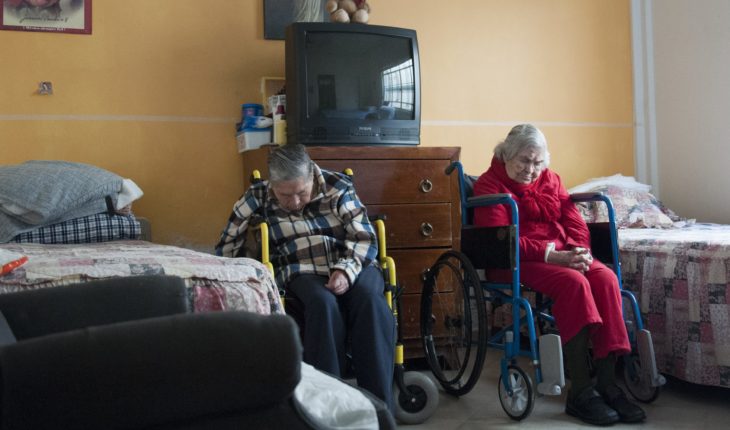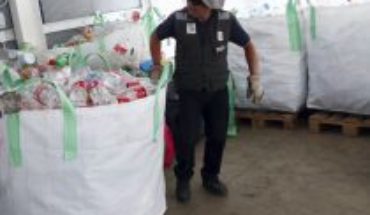in Mexico there is a public policy to care for older adults who can not fend for themselves. This despite the fact that from 2015, the World Health Organization (who) concluded that in the 21st century, no country should ignore the need of having a system of care, nor that these services are the responsibility of the State. Thus the practical guide to public policy of the CONEVAL, reports it what works and not for older adults in long-term care?
In the world, the document points out, there are many countries where there is a public system for this type of support, such as Japan, the Netherlands, Spain and United Kingdom. In Latin America, several Nations are moving to have it, as it is the case of Colombia, where they are reforming existing services. Brazil already has a care program unified and funded publicly, while Argentina and Chile advance even though they have fragmented systems and the provision of services depends on various bodies at different levels of Government. In Mexico, on the other hand, the State hasn’t done anything to create such a system of care.
The guide of the CONEVAL considers that vacuum leaving families with few options: appeal to public institutions that provide the service of isolated and insufficient way, hire private assistance or assume the care of the family members.
Data from the national survey of demographic dynamics (ENADID) 2014 showed that the majority of people 60 years or older (62.1%) lived with a disability (3.4 million) or limitation (4.7 million). Of the more than 33 million homes that exist in Mexico, 3.4 million were responsible for caring for people older than 60.
One reason for this is that private services are were the scope of the population by its high costs, while in public institutions, one of the few options is the national system for the Integral Development of the family (DIF) and the other is the National of the persons adult higher (INAPAM) Institute.
Both are decentralized, so it is responsibility and decision of federal entities define groups those who prioritize the services offered, as well as the mode of attention. INAPAM has six hostels in permanent accommodation, four in the city of Mexico, one in Guanajuato and another in Oaxaca. The DIF has two nursing homes for care in the city of Mexico, a House Home for elderly in Morelos and the other in Oaxaca.
There are also institutions of private assistance (IAP), civil associations (BC), civil society (S.C.), religious associations and societies do provide care services. With the aim of identifying such institutions, the national DIF and INEGI generated a first census of accommodation of Social assistance (CAAS) in 2015.
The census identified 4,517 accommodations. Of those, 22.6% (1,020) are homes for the elderly. 58% are constituted as a civil association, 14% as institutions of private assistance (IAP), 4% as civil society. Companies and religious associations represent 2% each, and the remainder (approximately 20%) represents another type of legal figure.
The CAAS recorded 14,582 people working in these institutions, but only 86% receives a payment for his work, 14% are working in them on a voluntary basis. Women represent 78% of the employees and 63% of volunteering. The DIF and INEGI Census reported that 97% of this staff does not have proper certification in skills for the care of dependent older adults.
As for the residents, at the time of the Census found 118,876 people living in institutions, with 22,611 (19%) reside on the classified as House home. Among residents, 61 percent of women reported a low level of education (21% non-formal education and 48% with complete primary or secondary incomplete) and 56% are 80 years or older.
On the performance of all these institutions there is no way to keep data, because in Mexico there is a systematic evaluation of the quality of care or public institutions for the assistance who engage in caring for seniors, nor assesses environmental conditions and infrastructure.
In terms of formal and public support at home services there is the program of home care to the chronically sick (ADEC) of the IMSS, which began in 1990 to provide basic procedures, with the active participation of the patient and their family. But it is not specialized in older population and is supported by the primary caregiver or family support network. About this program there is no institutional reports regarding its development or of the impact on the long-term health and well-being of patients.
Therefore not surprising that care falls primarily on the home, sponsored by relatives, neighbors and friends, without compensation and, in general, with little or any kind of support, the study of the CONEVAL says.
The most recent data of the satellite account of the Health Sector in Mexico, published by INEGI, show that the unpaid health work represented the 28.2% of the gross domestic product (GDP) in that sector in 2016, and 1.6% of the national in the same year. In terms of hours per week, unpaid by health care work represented, by 2016, 3.7% of the total.
Even though these figures refer to care to people of all ages, the reality of the changes in the population structure and the fact that 26% of the population reporting limitations (motor, sensory or cognitive) describe age advanced to cause of them indicated that, most likely, a significant percentage of unpaid health work corresponds to care and care for elderly.
Against this background, and after an assessment of different policies of care in different countries, the CONEVAL recommended: ● health secretariat should assume responsibility for the provision of services of CLP, including health services and social, as well as the regulation of institutions. All this under a multidimensional perspective and inter-sectoral integration.
● generate strategies with multidimensional approach, to support parents or primary caregivers to reduce the direct and indirect costs arising on these care carried out, including accompanying and support services in personal care activities.
● extend home medical visits for elderly dependent models.
● centres of respite for family caregivers.
● strategies for additional support such as food services hot, release of
care, among others.
● CLP models can be generated within the framework of the first level of care health services
.
● develop an accreditation program for personnel, equivalent to the program of certification of providers of health services institutions both institutions of CLP.
● it is essential to develop the regulations regarding the guidelines or requirements under which the institutions of long-term elderly care may operate or operate, including the standards of quality of character binding and enforcement national, defining a single institution to monitor, assess, and where necessary, sanction those who fail to meet them.
● the General Health Council must promote the declaration requirement governing the provision of CLP that the Ministry of health therefore propose the corresponding official standard, as well as a national training program.
● establish a mandatory national registry in which all institutions of CLP should sign up, regardless of their corporate name or condition of financing, in order to realize the actions of control and vigilance towards these establishments, at the same time that you have an information tool of public access for all potential users of these institutions and their families.
translated from Spanish: Elder care is not a priority in Mexico
December 7, 2018 |





